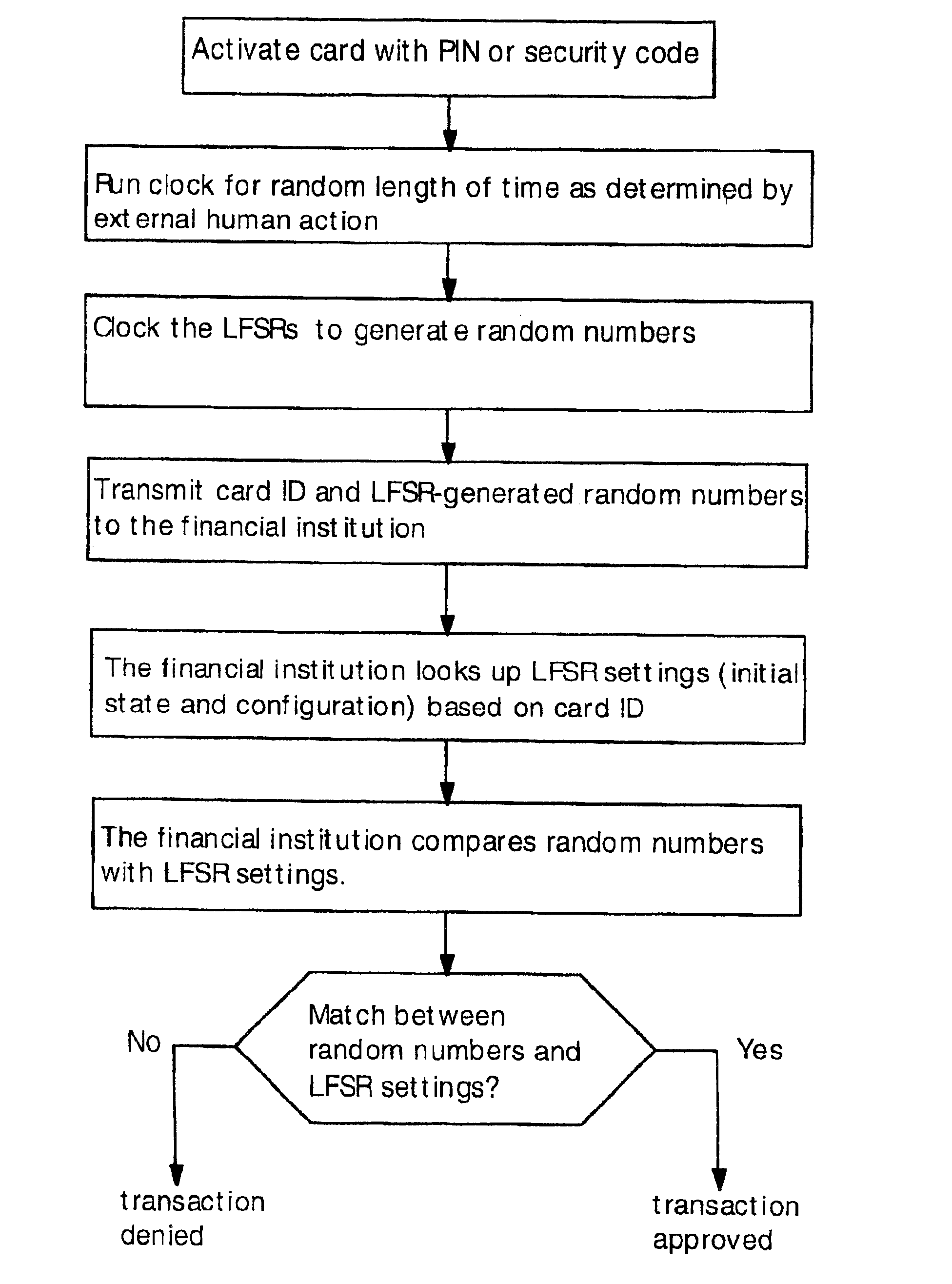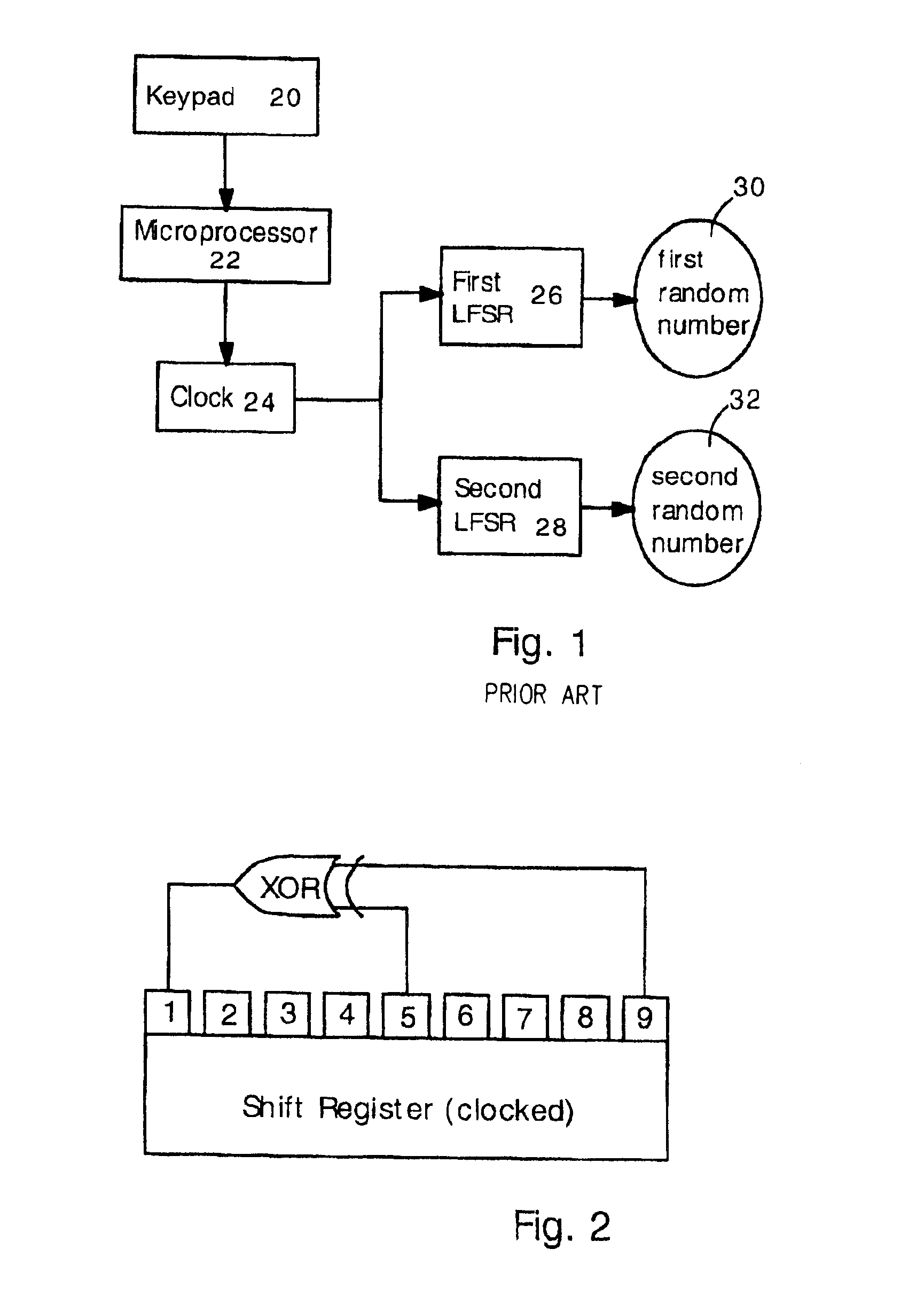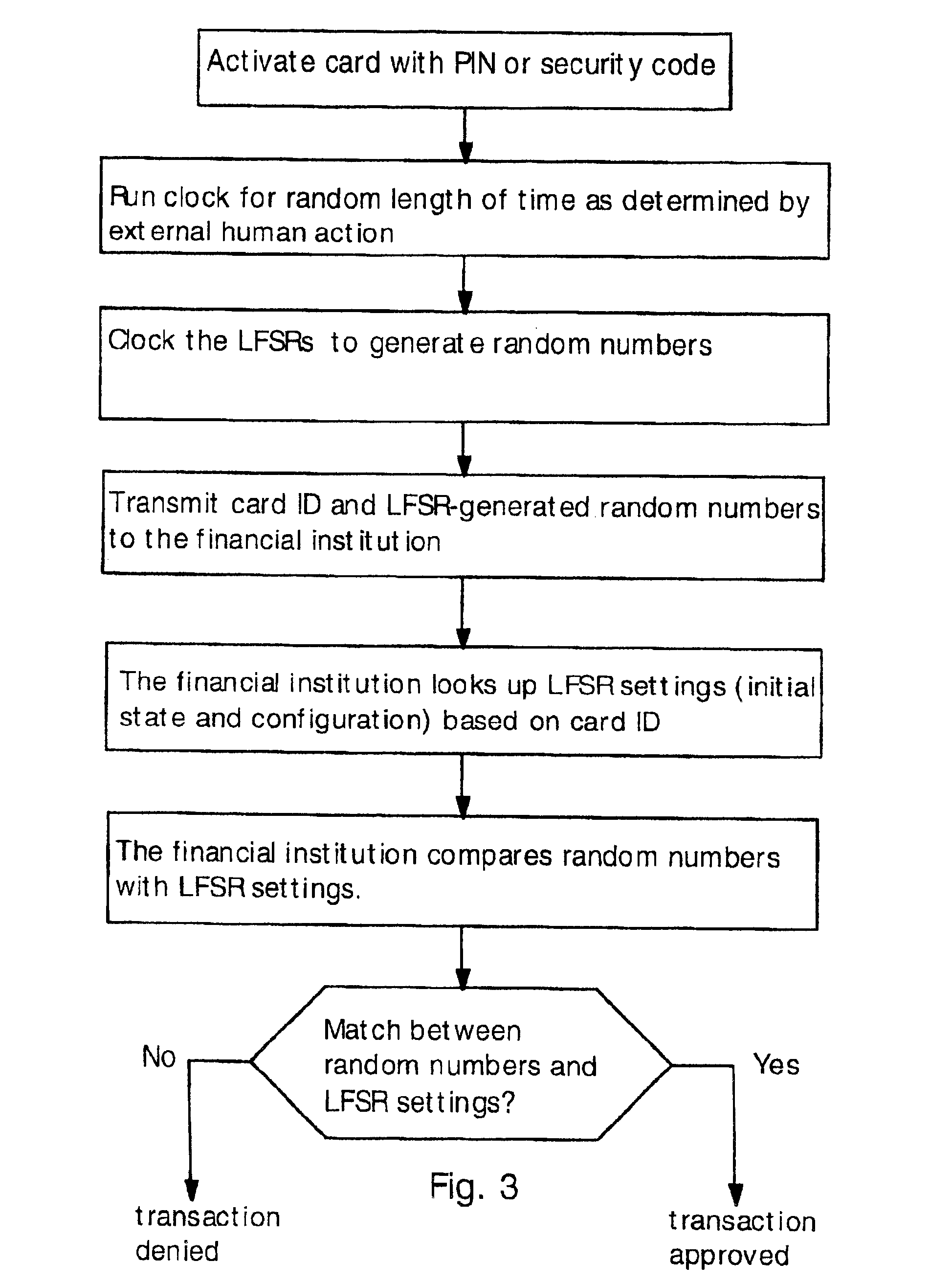Secure credit card employing pseudo-random bit sequences for authentication
a credit card and pseudo-random sequence technology, applied in the field of secure credit cards using pseudo-random sequences, can solve the problems of not being able to use the numbers a second time and being highly susceptible to fraud
- Summary
- Abstract
- Description
- Claims
- Application Information
AI Technical Summary
Benefits of technology
Problems solved by technology
Method used
Image
Examples
Embodiment Construction
[0020]The present invention provides circuits and methods for secure credit cards employing random numbers for authentication. Also, the present invention provides increased functionality for secure credit cards employing random numbers for authentication.
[0021]U.S. Pat. No. 6,641,050 by the present inventors provides a system for secure credit card transactions that prevents thieves from accessing a credit card account, even if they steal a credit card or credit card number. In this system, the credit card is a “smart card” with powered electronic circuitry.
[0022]FIG. 1 shows a schematic diagram electronic circuitry used in a secure credit card according to the '050 patent. Only the components relevant to the present discussion are illustrated; not shown are components such as memory circuits, I / O interface, display and external communication components (e.g. radio frequency antenna, infrared transmitter or magnetic strip).
[0023]The secure credit card includes a keypad 20, a microp...
PUM
 Login to View More
Login to View More Abstract
Description
Claims
Application Information
 Login to View More
Login to View More - R&D
- Intellectual Property
- Life Sciences
- Materials
- Tech Scout
- Unparalleled Data Quality
- Higher Quality Content
- 60% Fewer Hallucinations
Browse by: Latest US Patents, China's latest patents, Technical Efficacy Thesaurus, Application Domain, Technology Topic, Popular Technical Reports.
© 2025 PatSnap. All rights reserved.Legal|Privacy policy|Modern Slavery Act Transparency Statement|Sitemap|About US| Contact US: help@patsnap.com



